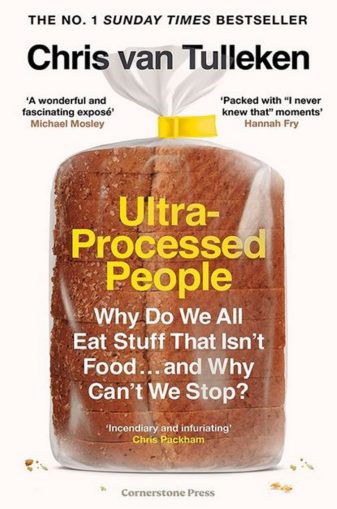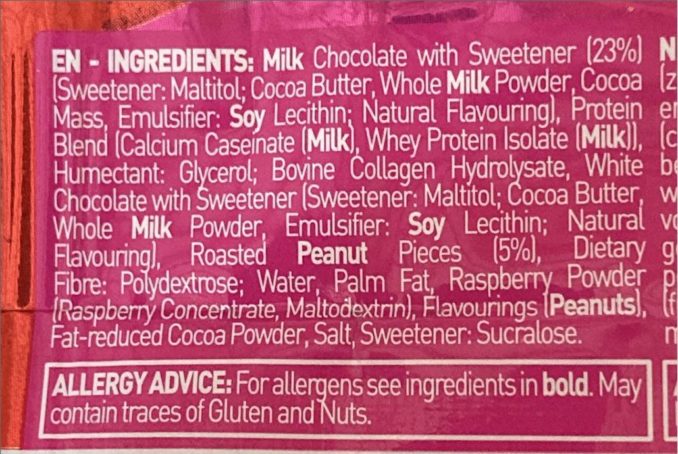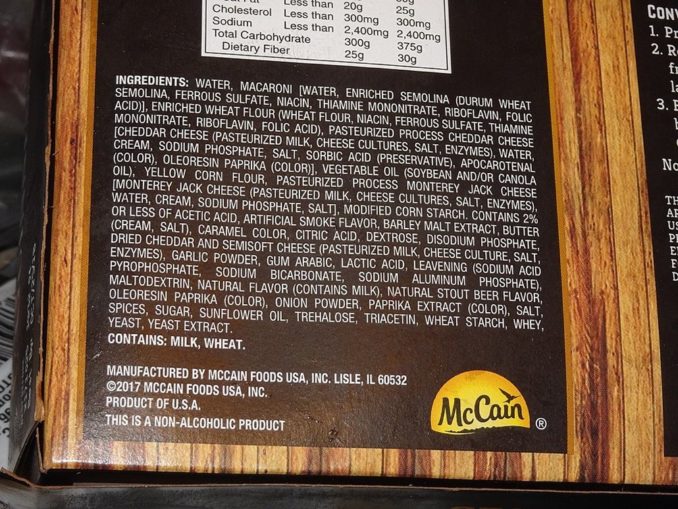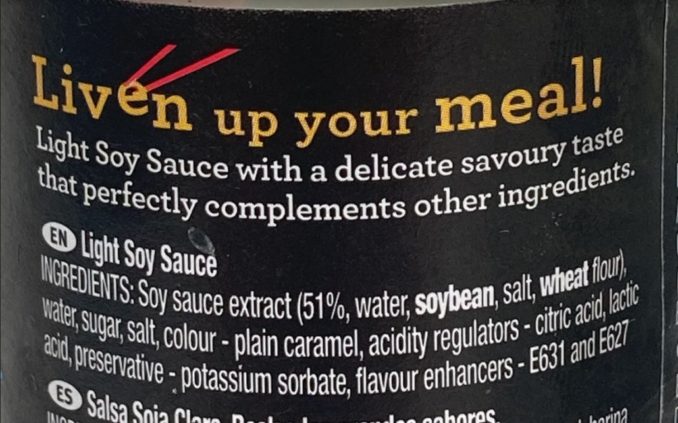
Ultra-Processed Foods have been getting a lot more press recently and I’d been wanting to know more about the subject beyond the few articles I’d read and this book seemed as good as any. The author Chris van Tulleken is an infectious diseases doctor but as a side-line has become something of an expert in UPFs, you may have seen him on TV or in the media as the one who ate nothing but UPFs for a month to see what effect it had on his body.
What is UPF? Basically, if it’s wrapped in plastic and has at least one ingredient that you wouldn’t find in a standard home kitchen it’s considered UPF. It’s not just the obvious tinned or packaged processed foods, it can include many organic, free range and so called ‘healthy’ products, like a ‘protein health bar’ or a ‘healthy ready meal’. A more in-depth definition of UPF is ‘formulations of ingredients, mostly of exclusive industrial use made by a series of industrial processes many requiring sophisticated equipment and technology’.

Ultra-Processed food has been with us since the 19th Century when Fahlberg invented the first artificial sweetener Saccharin in 1871 but it really began to develop fast in the second half of the 20th Century and its use and presence in our food system has increased massively in recent decades. It’s estimated by the author that the average Western diet consists of 60% UPF which is staggering.
You only have to look at the ingredients lists on the back of any packaged food to see how they have infiltrated the food chain, many with seemingly innocent sounding names such as ‘modified starch’ that are designed to give you the impression that they are almost natural.
The exotically named Xantham Gum which seems to be in everything is bacterial slime (yuck!).
Stabilisers, Emulsifiers, Gums, Lecithin, Glucose, oils are all used to cut costs and make food last longer and conveniently ready to consume. In ice cream for example the gums, glycerine and emulsifiers all stop ice crystals from forming by holding water close to them so it can be transported long distance and reduces the need for it to be kept at very low temperatures. Ice Cream companies are in an unending arms race with each other to develop more inviting products and these are usually done by adding more ingredients that alter the texture or flavourings.
Other UPF chemicals mimic real and expensive ingredients like milk and egg. Sometimes entirely novel products are created like gummy sweets or lentil foam crisps.
Pies, fried chicken, pizza, butter pancake mix, pastries, gravies, mayonnaise all began as real food but the non UPF ingredients are expensive and so gradually over the years they have been replaced by synthetic alternatives. Food manufacturers also spend a lot of time making ‘low fat’ products replacing fat with fructose and other chemicals.

B137, CC0, via Wikimedia Commons
There’s a growing body of evidence that UPF damages the human body, increasing the rates of obesity, cancer, diabetes, liver bowel and heart diseases, mental illness, dental problems and dementia. The book delves into how the Food Giants such as Nestle fund their own research to counter this evidence, often hiding their influence with the scientists involved not disclosing their conflicts of interest. This makes it very hard to really ascertain how dangerous or not UPFs really are. On the one hand you have many studies that the author quotes that detail how damaging they are. On the other hand, Food Corporations secretly fund loads of studies trying to shift the blame elsewhere – Coke for example paid for studies on obesity saying lack of exercise was the cause not consumption of sugar. It’s why you often see articles and studies contradicting each other about the health benefits or harms of everyday natural foods, these are often funded by Food Corporations to distract from UPFs. How to tell which studies are genuinely independent without any agenda is very hard.
The author describes the last few decades as the ‘third age of eating’ – the first one being living organisms eating stuff that has never been alive like rocks and metal, the second stage being living organisms eating other living organisms over the past few hundred million years. Only in the last few decades have we (humans and their pets & livestock) been eating novel molecules that have never been in the food chain. In the second stage of eating very complex processes developed to ensure mammals get the right amount of energy and essential nutrients to survive. There’s much evidence to show that animals whether consciously or not have developed the ability to find this balance and that humans also have this inbuilt mechanism. Introducing so many new molecules into our diet in such a short space of time is disrupting this matrix.
It’s a fascinating and information dense book that goes well beyond UPFs, with detailed explanations on how our bodies process food, manage calories, why we gain weight, why exercise on its own won’t help you lose it, how our brains respond to certain foods and chemicals. The history of scientific discoveries is explored including some very grim experiments with animals that would never be allowed today but nevertheless did expand our knowledge. The author involves his children in his own personal experiments, observing their behaviour with breakfast cereals and the like, and he did his own personal experiment by eating only UPFs for a month. UPFs are designed to be overconsumed and there’s a great chapter on Pringles and why when you ‘pop ‘em you can’t stop ‘em’.
The most shocking part for me was discovering that food additives, extracts and colourings in the USA are barely regulated at all. The book explains the history of how this has come about, effectively the food companies are allowed to present their own research into whether some new molecule is safe and the U.S. Food & Drug Administration reviews their evidence and rubber stamps it. So there are thousands of these additives in the food chain self-determined by the manufacturers to be safe with no robust scientific studies to determine whether they are and virtually none at all on their long-term effects. Common sense tells you that the almost infinite combinations of these chemicals could have long term effects on us. We all know how corrupt the scientists have become in recent decades in all sorts of areas so it would not be a surprise to see a scandal unfolding in the coming decades along the same lines as the tobacco industry.
It’s a bit disappointing that the author then tries to shoehorn climate change into the discussion and somewhat takes the shine off his argument. He writes in great detail how even the medical establishment has been ‘captured’ by likes of Nestle and Coke. If he can see how the food corporations and the industry in general has been dishonest and manipulative with its evidence why cannot he see that the same is likely with ‘climate science’.
That aside it’s a great book and you will learn a lot about why UPFs are so easy to consume. They are designed to be soft with no chewing involved so you eat far more calories per minute and don’t feel full until long after you’ve finished. They displace diverse whole food groups from your diet which means you don’t get the nutrients your body needs. They alter metabolism and appetite in ways which are only just being discovered. There is evidence now that the microbiome in our gut is being damaged long term by all the emulsifiers, preservatives and modified starches we consume.
What’s the solution? The author argues that government intervention is the answer but acknowledges that this is hard because the UPF industry is so big and powerful that it over rides any recommendations given to governments. I would further argue that governments’ record in legislating in this area is often poorly thought out and even when they try things like introducing ‘sugar taxes’ they have the effect of introducing even more UPFs to replace the sugar.
In the end it’s up to the individual to at least be as informed as possible, be aware of UPFs and decide for yourself what level of consumption you are prepared to countenance. It is virtually impossible to completely avoid UPFs, flavourings, colourings and additives as they are everywhere so cut them out as much as you can, especially if easy substitutes are available. I already cook most things from scratch so I would consider my consumption of UPFs probably below average but it’s made me much more aware of their existence and how much of them I have consumed in my lifetime. I notice them everywhere now. For instance, I discovered the soy sauce I was using had a long ingredients list of colourings, flavour enhancers, sugar, citric acid, lactic acid E631 and E627. So now I’ve switched to one that only has soy beans, water and salt which is all soy sauce should be. I’m still going to have the odd ice cream and biscuits though.

A final note if you are considering buying this book – I bought the audiobook and I found it easier to just listen to a chapter or two at a time in the car as there’s so much information to take in. I discovered there’s a bonus to the audiobook in that interspersed throughout there are recorded conversations between the author and his brother discussing the issues and how it directly relates to their own diets and weight problems and everyday life, these are very interesting and informative and reflect how you might talk about it with friends & family and they aren’t featured in the physical book.
© Whistler80 2023



